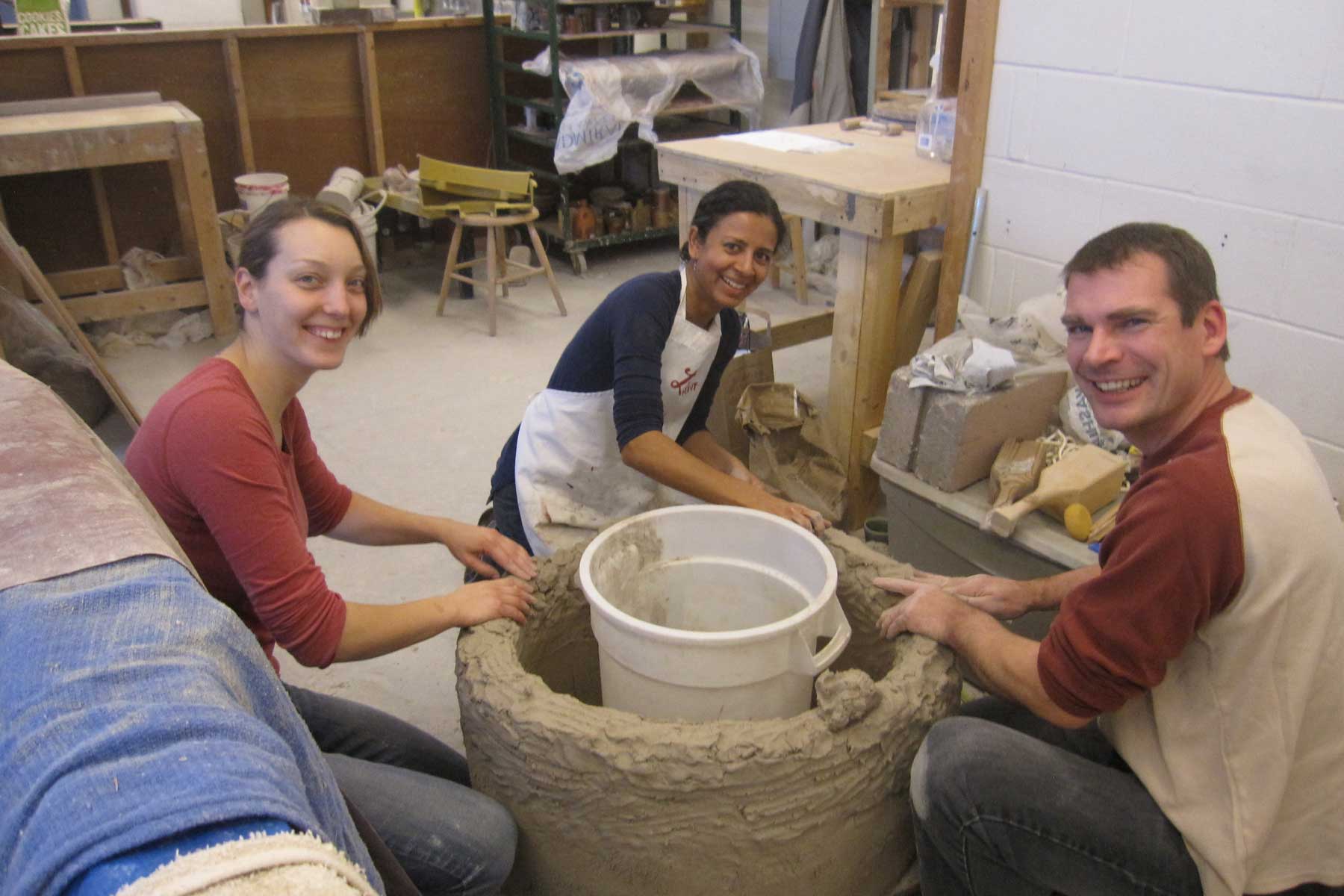Recreating Ancient Greek Ceramics
Week 0–Getting Started
By Sanchita Balachandran

“For our knowledge of the technique of Athenian vases we have various sources of information. There are a number of references to the craft in ancient literature; we have several actual representations of potters at work among extant vase paintings; and there is the important testimony of the vases themselves…There is, however, another very important source of information ready to our hand which has not been fully utilized, namely, the study of the technical processes employed in the making of modern pottery…Many archaeologists have, of course, seen potters at work in different places, or perhaps consulted potters on specific points; but that is a different thing from getting a thorough knowledge of the craft oneself and learning once and for all what is possible and what is not possible in clay-working.” –Gisela Richter, The Craft of Athenian Pottery. New Haven: Yale University Press, 1923: xi.
Thus begins the preface to famed scholar and curator Gisela Richter’s 1923 book which traces her experience learning to make ceramics at the New York State School of Ceramics in Alfred, New York. She took on an apprenticeship of sorts in an effort to understand how the vases produced in ancient Athens thousands of years before might have been made. Though written nearly a century ago, Richter book which shows her desire to understand exactly how these iconic vessels were manufactured mirrors the work of scholars even today. And the question of “how did they do that?” befuddles the public as well. Even the most unseasoned museum goer recognizes the strikingly glossy black vessels with delicately painted red figures and perhaps admires their elegant shapes and proportions. And to anyone pausing for more than a cursory look, the question of how these objects physically came to be isn’t easily grasped. How exactly did the ancient Greek potters and painters do this?
For the past several years, I have had the absolute pleasure and privilege of working with students and faculty at the Johns Hopkins Archaeological Museum. Because of my own interest in ancient manufacturing technologies, I have always introduced my students to what always struck me as the utter magic of how Greek black and red figure pottery was made. And we are fortunate to have a wonderful collection of objects to study. My usual description of how they were created is straightforward—the vessels were thrown, slipped (painted with a thinned clay), fired (through oxidation, reduction, and oxidation phases)—and out of the kiln came a perfectly formed vase. But anyone who has made anything, even a pinch pot out of Playdoh, knows that there is a plan, and then there is reality, and usually many, many twists and turns between the original intention and the final outcome.

This course grew out of a desire to see the process of recreating red-figure pottery through its many phases, and to gain an appreciation for just how complicated these phases are, and how many decisions—big and small—must be made along the way. It also became clear, to follow on Richter’s words, that there were numerous sources available to help on this quest, but that they needed to be brought together. Certainly, there are the many thoughtful and detailed works of art historians and archaeologists and a dauntingly large literature on Greek vases. But the voice, and more importantly, the hands of the potter were essential. And so too were the different kinds of scientific analyses and observations published more recently by art conservators and materials scientists. The hope then was that by bringing all of these disciplines and specialists together, one might approach a little more closely the elusive reality of the master potter and painter working in ancient Greece. That’s where the course syllabus came together.
But one key element was missing—the apprentice. Who else would be willing to slog for long hours, watching the most accomplished potter, learning the most basic of skills and making the observations and gaining the judgment (however limited it is in 13 weeks of work), but an apprentice in workshop? Or better yet, 13 apprentices (actually 15 when I count myself and teaching assistant Ross Brendle)? This course relies on the participation, enthusiasm, skills, drive and careful work of a group of undergraduate students here at Johns Hopkins. They are chosen from fields as diverse as archaeology, studio art, art history, classics, and materials science, and I hope in the next 13 weeks, they will grow together, asking different questions, learning with their hands, and perhaps even manage to produce a fired kylix or two.
This course would not be possible without the generous support of Elizabeth Rodini, director of the Programs in Museums and Society at Hopkins and the Andrew W. Mellon Foundation. Their support and encouragement has allowed us to collaborate with the brilliant and talented Matthew Hyleck, potter and Education Coordinator of Baltimore Clayworks, an inspiring educational ceramics non-profit here in the city. Funding has also made it possible for us to make a short documentary of our discoveries—both big and small—over the course of the semester. There are many individuals who gave so freely of their expertise, time and advice on this project, and they are listed here in a long and still growing list. This course has been in planning for nearly a year, and now it is time to apprentice ourselves to the experienced and practiced potters, both ancient and contemporary.